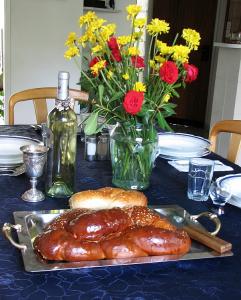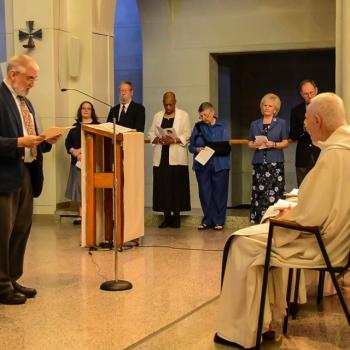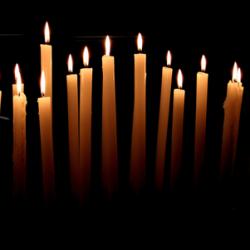Today’s guest post is by Jon M. Sweeney, author of numerous books including The Pope’s Cat and When Saint Francis Saved the Church. Jon is the editor of Thomas Merton’s A Course in Christian Mysticism and the forthcoming A Course in Desert Spirituality. In today’s post he offers a reflection on how current insights about observance of the Sabbath often overlook a subtle, but important, detail — that has a surprising contemplative implication.

I’ve read many books and articles, heard many sermons and exhortations, on the topic of the Sabbath.
And, as I’m married to a Jewish woman, who’s also a rabbi, our family observes a weekly Sabbath every Saturday.
We “make Shabbat,” as it is said, usually lighting candles, blessing our children, studying Torah, and generally refraining for twenty-four hours from most of the usual weekly tasks and work.
In the last twenty years – perhaps since Wayne Muller’s Sabbath was published in 1999 – there’s been a rediscovering of Shabbat as a spiritual practice for Jews and Christians. It has focused attention on the Sabbath’s potential to revive, renew, regenerate, and retool us at the end, and as a beginning, of each new week.
But I think we might be missing an essential ascetic, contemplative dimension of Shabbat discipline. It seems to be missing from how all the recent books talk of Shabbat, and even how we practice it in our home.
Looking closely at the Torah, the portion for this past week began in Exodus, chapter 35. Look at that third verse and you see raised up as a primary “don’t” on the Sabbath, “kindling a fire.”
You shall kindle no fire in all your dwellings on the sabbath day. (Exodus 35:3)
Three thousand years ago or so, the kindling of a fire would have been central to everyday work, life, and comfort. Without a fire in the winter, even in the land of Israel, your dwelling would have been very cold.
Without a fire, you couldn’t have cooked, which means that your eating would have been lousy. Then, of course without a fire you couldn’t do other sorts of everyday work that many people typically did to earn their keep.
My point is: We often make observing the Sabbath out to be a lovely, calming, ahhh sort of experience, as in, Ahhh, a day on which I’m commanded by God to stop working, and stop toiling and worrying. Beautiful! Sign me up!
That’s all good. In fact, the rabbis of old even say that the Sabbath is a day to be joyful. Don’t work, take a leisurely walk. Don’t do the dishes, let them wait until tomorrow. You are supposed to find joy particularly on this day. To that end, for example, the rabbis say that sex with your spouse on the Sabbath is a special blessing.
But what about the ascetic opportunities the Sabbath must have been intended for? It wouldn’t have been comfortable long ago to take that day off, without kindling a fire. But the fact is, that without that comfort, the joy of a Sabbath day was made possible. The blessing of Sabbath was created, in part, by denying yourself normal comforts.
If you were not keeping your house warm, or spending your time preparing the usual cooked meals, then you’d have time for other things. Shabbat discipline would help you turn your mind and heart to God in the way that fasting, long periods of prayer, sitting in meditation, observing silence, and careful lectio with a religious book, might do.
Turning away (conversion, which takes a lifetime, is about “turning”) from weekly distractions would have given our ancestors fresh opportunities for pondering their lives and connecting with God. I think this must have been the purpose, and not simply resting with a sense of Ahhh.
Enjoy reading this blog?
Click here to become a patron.














